#Cyrus The Great
Photo






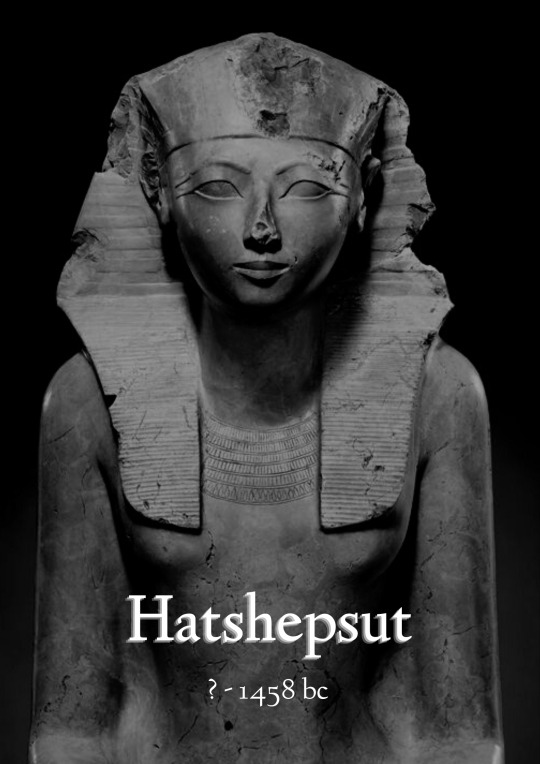


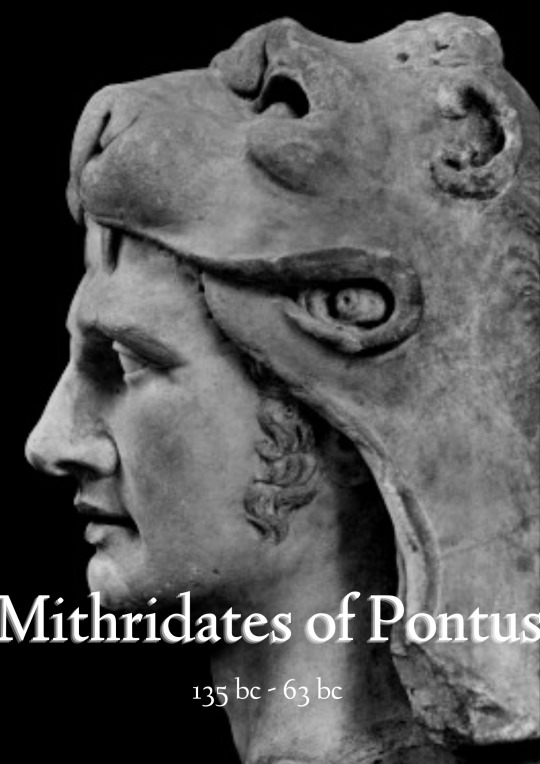
arethusa (my sister) and i’s list of historical figures were positive were hot as fuck
#ok my sister has questionable likes#she's obviously the guy section and im the woman section#history#dont take this too seriously#nefertiti#alexander the great#queen boudicca#cyrus the great#zheng yi sao#hammurabi#hatshepsut#sappho#ted theodore logan#mithridates of pontus
826 notes
·
View notes
Text
Countries that are no more: Achaemenid Empire (550BC-330BC)
It was not the first empire of Iranian peoples, but it arose as probably the greatest in terms of influence and became the measure by which all subsequent Iranian empires tended to compare themselves and its influence on culture, government & civil infrastructure would influence others beyond the span of its territory and the span of time. This is the Achaemenid Empire.
Name: In Old Persian it was known as Xšāça or the "The Kingdom or the Empire", it was named the Achaemenid Empire by later historians. Named after the ruling dynasty established by its founder Cyrus the Great who cited the name of his ancestor Haxāmaniš or Achaemenes in Greek as progenitor of the dynasty. It is sometimes also referred to as the First Persian Empire. The Greeks simply referred to it as Persia, the name which stuck for the geographic area of the Iranian plateau well into the modern era.
Language: Old Persian & Aramaic were the official languages. With Old Persian being an Iranian language that was the dynastic language of the Achaemenid ruling dynasty and the language of the Persians, an Iranian people who settled in what is now the southwestern Iranian plateau or southwest Iran circa 1,000 BC. Aramaic was a Semitic language that was the common and administrative language of the prior Neo-Assyrian & Neo-Babylonian Empires which centered in Mesopotamia or modern Iraq, Syria & Anatolian Turkey. After the Persian conquest of Babylon, the use of Aramaic remained the common tongue within the Mesopotamian regions of the empire, eventually becoming a lingua franca across the land. As the empire spread over a vast area and became increasingly multiethnic & multicultural, it absorbed many other languages among its subject peoples. These included the Semitic languages Akkadian, Phoenician & Hebrew. The Iranian language of Median among other regional Iranian languages (Sogdian, Bactrian etc). Various Anatolian languages, Elamite, Thracian & Greek among others.
Territory: 5.5 million kilometers squared or 2.1 million square miles at its peak circa 500BC. The Achaemenid Empire spanned from southern Europe in the Balkans (Greece, Bulgaria, European Turkey) & northwest Africa (Egypt, Libya & Sudan) in the west to its eastern stretches in the Indus Valley (Pakistan) to parts of Central Asia in the northeast. It was centered firstly in the Iranian Plateau (Iran) but also held capitals in Mesopotamia (Iraq). Territory was also found in parts of the Arabian Peninsula & the Caucausus Mountains.
Symbols & Mottos: The Shahbaz or Derafsh Shahbaz was used as the standard of Cyrus the Great, founder of the empire. It depicts a bird of prey, typically believed to be a falcon or hawk (occasionally an eagle) sometimes rendered gold against a red backdrop and depicts the bird holding two orbs in its talons and adorned with an orb likewise above its head. The symbolism was meant to depict the bird guiding the Iranian peoples to conquest and to showcase aggression & strength coupled with dignity. The imperial family often kept falcons for the pastime of falconry.
Religion: The ancient Iranian religion of Zoroastrianism served as the official religion of the empire. It was adopted among the Persian elite & and had its unique beliefs but also helped introduce the concept of free-will among its believers, an idea to influence Judaism, Christianity & Islam in later centuries. Despite this official religion, there was a tolerance for local practices within the subject regions of the empire. The ancient Mesopotamian religion in Babylon & Assyria, Judaism, the Ancient Greek & Egyptian religions & Vedic Hinduism in India was likewise tolerated as well. The tolerance of the Achaemenids was considered a relative hallmark of their dynasty from the start. Famously, in the Old Testament of the Bible it was said that it was Cyrus the Great who freed the Jews from their Babylonian captivity and allowed them to return to their homeland of Judea in modern Israel.
Currency: Gold & silver or bimetallic use of coins became standard within the empire. The gold coins were later referred to as daric and silver as siglos. The main monetary production changes came during the rule of Darius I (522BC-486BC). Originally, they had followed the Lydian practice out of Anatolia of producing coins with gold, but the practice was simplified & refined under the Achaemenids.
Population: The estimates vary ranging from a low end of 17 million to 35 million people on the upper end circa 500BC. The official numbers are hard to determine with certainty but are generally accepted in the tens of millions with the aforementioned 17-35 million being the most reasonable range based on available sources.
Government: The government of the Achaemenid Empire was a hereditary monarchy ruled by a king or shah or later referred to as the ShahanShah or King of Kings, this is roughly equivalent to later use of the term Emperor. Achaemenid rulers due the unprecedented size of their empire held a host of titles which varied overtime but included: King of Kings, Great King, King of Persia, King of Babylon, Pharaoh of Egypt, King of the World, King of the Universe or King of Countries. Cyrus the Great founded the dynasty with his conquest first of the Median Empire and subsequently the Neo-Babylonians and Lydians. He established four different capitals from which to rule: Pasargadae as his first in Persia (southwest central Iran), Ecbatana taken from the Medians in western Iran's Zagros Mountains. The other two capitals being Susa in southwest Iran near and Babylon in modern Iraq which was taken from the Neo-Babylonians. Later Persepolis was made a ceremonial capital too. The ShahanShah or King of Kings was also coupled with the concept of divine rule or the divinity of kings, a concept that was to prove influential in other territories for centuries to come.
While ultimate authority resided with the King of Kings and their bureaucracy could be at times fairly centralized. There was an expansive regional bureaucracy that had a degree of autonomy under the satrapy system. The satraps were the regional governors in service to the King of Kings. The Median Empire had satraps before the Persians but used local kings they conquered as client kings. The Persians did not allow this because of the divine reverence for their ShahanShah. Cyrus the Great established governors as non-royal viceroys on his behalf, though in practice they could rule like kings in all but name for their respective regions. Their administration was over their respective region which varied overtime from 26 to 36 under Darius I. Satraps collected taxes, acted as head over local leaders and bureaucracy, served as supreme judge in their region to settle disputes and criminal cases. They also had to protect the road & postal system established by the King of Kings from bandits and rebels. A council of Persians were sent to assist the satrap with administration, but locals (non-Persian) could likewise be admitted these councils. To ensure loyalty to the ShahanShah, royal secretaries & emissaries were sent as well to support & report back the condition of each satrapy. The so called "eye of the king" made annual inspections of the satrapy to ensure its good condition met the King of Kings' expectations.
Generals in chief were originally made separate to the satrap to divide the civil and military spheres of government & were responsible for military recruitment but in time if central authority from the ShahanShah waned, these could be fused into one with the satrap and general in chiefs becoming hereditary positions.
To convey messages across the widespread road system built within the empire, including the impressive 2,700 km Royal Road which spanned from Susa in Iran to Sardis in Western Anatolia, the angarium (Greek word) were an institution of royal messengers mounted on horseback to ride to the reaches of the empire conveying postage. They were exclusively loyal to the King of Kings. It is said a message could be reached to anywhere within the empire within 15 days to the empire's vast system of relay stations, passing message from rider to rider along its main roads.
Military: The military of the Achaemenids consisted of mostly land based forces: infantry & cavalry but did also eventually include a navy.
Its most famous unit was the 10,000-man strong Immortals. The Immortals were used as elite heavy infantry were ornately dressed. They were said to be constantly as 10,000 men because for any man killed, he was immediately replaced. Armed with shields, scale armor and with a variety of weapons from short spears to swords, daggers, slings, bows & arrows.
The sparabara were the first line of infantry armed with shields and spears. These served as the backbone of the army. Forming shield walls to defend the Persian archers. They were said to ably handle most opponents and could stop enemy arrows though their shields were vulnerable to enemy spears.
There was also the takabara light infantry and though is little known of them it seems they served as garrison troops and skirmishers akin to the Greek peltast of the age.
The cavalry consisted of four distinct groups: chariot driven archers used to shoot down and break up enemy formations, ideally on flat grounds. There was also the traditional horse mounted cavalry and also camel mounted cavalry, both served the traditional cavalry functions and fielded a mix of armor and weapons. Finally, there was the use of war elephants which were brought in from India on the empire's eastern reaches. These provided archers and a massive way to physically & psychologically break opposing forces.
The navy was utilized upon the empire's reaching the Mediterranean and engaged in both battles at sea and for troop transport to areas where troops needing deploying overseas, namely in Greece.
The ethnic composition of Achaemenid military was quite varied ranging from a Persian core with other Iranian peoples such as the Medians, Sogdian, Bactrians and Scythians joining at various times. Others including Anatolians, Assyrians, Babylonians, Anatolians, Indians, Arabs, Jews, Phoenicians, Thracians, Egyptians, Ethiopians, Libyans & Greeks among others.
Their opponents ranged from the various peoples they conquered starting with the Persian conquest of the Medians to the Neo-Babylonians, Lydians, Thracians, Greeks, Egyptians, Arabs & Indians and various others. A hallmark of the empire was to allow the local traditions of subjugated areas to persist so long as garrisons were maintained, taxes were collected, local forces provided levies to the military in times of war, and they did not rebel against the central authority.
Economy: Because of the efficient and extensive road system within the vast empire, trade flourished in a way not yet seen in the varied regions it encompassed. Tax districts were established with the satrapies and could be collected with relative efficiency. Commodities such as gold & jewels from India to the grains of the Nile River valley in Egypt & the dyes of the Phoenicians passed throughout the realm's reaches. Tariffs on trade & agricultural produce provided revenue for the state.
Lifespan: The empire was founded by Cyrus the Great circa 550BC with his eventual conquest of the Median & Lydian Empires. He started out as Cyrus II, King of Persia a client kingdom of the Median Empire. His reign starting in 559BC. Having overthrown and overtaken the Medians, he turned his attention Lydia and the rest of Anatolia (Asia Minor). He later attacked the Eastern Iranian peoples in Bactria, Sogdia and others. He also crossed the Hindu Kush mountains and attacked the Indus Valley getting tribute from various cities.
Cyrus then turned his attention to the west by dealing with the Neo-Babylonian Empire. Following his victory in 539BC at the Battle of Opis, the Persians conquered the Babylonia with relative quickness.
By the time of Cyrus's death his empire had the largest recorded in world history up to that point spanning from Anatolia to the Indus.
Cyrus was succeeded by his sons Cambyses II and Bardiya. Bardiya was replaced by his distant cousin Darius I also known as Darius the Great, whose lineage would constitute a number of the subsequent King of Kings.
Darius faced many rebellions which he put down in succession. His reign is marked by changes to the currency and the largest territorial expansion of the empire. An empire at its absolute zenith. He conquered large swaths of Egypt, the Indus Valley, European Scythia, Thrace & Greece. He also had exploration of the Indian Ocean from the Indus River to Suez Egypt undertaken.
The Greek kingdom of Macedon in the north reaches of the Hellenic world voluntarily became a vassal of Persia in order to avoid destruction. This would prove to be a fateful first contact with this polity that would in time unite the Greek-speaking world in the conquest of the Achaemenid Empire. However, at the time of Darius I's the reign, there were no early indications of this course of events as Macedon was considered even by other Greek states a relative backwater.
Nevertheless, the Battle of Marathon in 490BC halted the conquest of mainland Greece for a decade and showed a check on Persia's power in ways not yet seen. It is also regarded as preserving Classical Greek civilization and is celebrated to this day as an important in the annals of Western civilization more broadly given Classical Greece & in particular Athens's influence on western culture and values.
Xerxes I, son of Darius I vowed to conquer Greece and lead a subsequent invasion in 480BC-479BC. Xerxes originally saw the submission of northern Greece including Macedon but was delayed by the Greeks at the Battle of Thermopylae, most famously by Spartan King Leonidas and his small troop (the famed 300). Though the Persians won the battle it was regarded as a costly victory and one that inspired the Greeks to further resistance. Though Athens was sacked & burnt by the Persians, the subsequent victories on sea & land at Salamis & Plataea drove the Persians back from control over Greece. Though war would rage on until 449BC with the expulsion of the Persians from Europe by the Greeks.
However, the Greeks found themselves in a civil war between Athens & Sparta and Persia having resented the Athenian led coalition against their rule which had expelled them from Europe sought to indirectly weaken the Greeks by supporting Greek factions opposed to Athens through political & financial support.
Following this reversal of fortune abroad, the Achaemenid Empire not able to regain its foothold in Europe, turned inward and focused more on its cultural development. Zoroastrianism became the de-facto official religion of the empire. Additionally, architectural achievements and improvements in its many capitals were undertaken which displayed the empire's wealth. Artaxerxes II who reigned from 405BC-358BC had the longest reign of any Achaemenid ruler and it was characterized by relative peace and stability, though he contended with a number of rebellions including the Great Satraps Revolt of 366BC-360BC which took place in Anatolia and Armenia. Though he was successful in putting down the revolt. He also found himself at war with the Spartans and began to sponsor the Athenians and others against them, showcasing the ever dynamic and changing Greco-Persian relations of the time.
Partially for safety reasons, Persepolis was once again made the capital under Artaxerxes II. He helped expand the city and create many of its monuments.
Artaxerxes III feared the satraps could no longer be trusted in western Asia and ordered their armies disbanded. He faced a campaign against them which suffered some initial defeats before overcoming these rebellions, some leaders of which sought asylum in the Kingom of Macedon under its ruler Philip II (father of Alexander the Great).
Meanwhile, Egypt had effectively become independent from central Achaemenid rule and Artaxerxes III reinvaded in around 340BC-339BC. He faced stiff resistance at times but overcame the Egyptians and the last native Egyptian Pharaoh Nectanebo II was driven from power. From that time on ancient Egypt would be ruled by foreigners who held the title Pharaoh.
Artaxerxes III also faced rebellion from the Phoenicians and originally was ejected from the area of modern coastal Lebanon, Syria & Israel but came back with a large army subsequently reconquered the area including burning the Phoenician city of Sidon down which killed thousands.
Following Artaxerxes III's death his son succeeded him but a case of political intrigue & dynastic murder followed. Eventually Darius III a distant relation within the dynasty took the throne in 336BC hoping to give his reign an element of stability.
Meanwhile in Greece, due to the military reforms and innovations of Philip II, King of Macedon, the Greek speaking world was now unified under Macedon's hegemony. With Philip II holding the title of Hegemon of the Hellenic League, a relatively unified coalition of Greek kingdoms and city-states under Macedon premiership that formed to eventually invade Persia. However, Philip was murdered before his planned invasion of Asia Minor (the Achaemenid's westernmost territory) could commence. His son Alexander III (Alexander the Great) took his father's reforms and consolidated his hold over Greece before crossing over to Anatolia himself.
Darius III had just finished reconquering some rebelling vestiges of Egypt when Alexander army crossed over into Asia Minor circa 334BC. Over the course of 10 years Alexander's major project unfolded, the Macedonian conquest of the Persian Empire. He famously defeated Persians at Granicus, Issus and Gaugamela. The latter two battles against Darius III in person. He took the King of Kings family hostage but treated them well while Darius evacuated to the far eastern reaches of his empire to evade capture. He was subsequently killed by one of his relatives & satraps Bessus, whom Alexander eventually had killed. Bessus had declared himself King of Kings though this wasn't widely recognized and most historians regard Darius III, the last legitimate ShahanShah of Achaemenids.
Alexander had taken Babylon, Susa & Persepolis by 330BC and effectively himself was now ruler of the Persian Empire or at least its western half. In addition to being King of Macedon & Hegemon of the Hellenic League, he gained the titles King of Persia, Pharaoh of Egypt & Lord of Asia. Alexander would in time eventually subdue the eastern portions of the Achaemenid realm including parts of the Indus Valley before turning back to Persia and Babylon where he subsequently became ill and died in June 323BC at age 32. Alexander's intentions it appears were never to replace the Achaemenid government & cultural structure, in fact he planned to maintain and hybridize it with his native Greek culture. He was in fact an admirer of Cyrus the Great (even restoring his tomb after looting) & adopted many Persian customs and dress. He even allowed the Persians to practice their religion and had Persian and Greeks start to serve together in his army. Following his death and with no established successor meant the empire he established which essentially was the whole Achaemenid Empire's territory in addition to the Hellenic world fragmented into different areas run by his most trusted generals who established their own dynasties. The Asian territories from Anatolia to the Indus (including Iran and Mesopotamia) gave way to the Hellenic ruled Seleucid Empire while Egypt became the Hellenic ruled Ptolemaic Kingdom. The synthesis of Persian and Greek cultures continued in the Seleucid and Greco-Bactrian kingdoms of antiquity.
The Achaemenid Empire lasted for a little over two centuries (550BC-330BC) but it casted a long shadow over history. Its influence on Iran alone has persisted into the modern age with every subsequent Persian Empire claiming to be its rightful successor from the Parthian & Sasanian Empires of pre-Islamic Iran to the Safavids of the 16th-18th century and the usage of the title Shah until the last Shah's ejection from power in the 1979 Islamic Revolution. Even the modern Islamic Republic of Iran uses Achaemenid imagery in some military regiments and plays up its importance in tourism and museums as a source of pride to Persian (Farsi) & indeed Iranian heritage. Likewise, its form of governance and the pushing of the concept of divine rights of kings would transplant from its Greek conquerors into the rest of Europe along with various other institutions such as its road & mail system, tax collection & flourishing trade. Its mix of centralized & decentralized governance. Its religious & cultural tolerance of local regions even after their conquest would likewise serve as a template for other empires throughout history too. The Achaemenid Empire served as a template for vast international & transcontinental empires that would follow in its wake & surpass its size & scope of influence. However, it is worth studying for in its time, it was unprecedented, and its innovations so admired by the likes of Alexander the Great and others echo into the modern era.
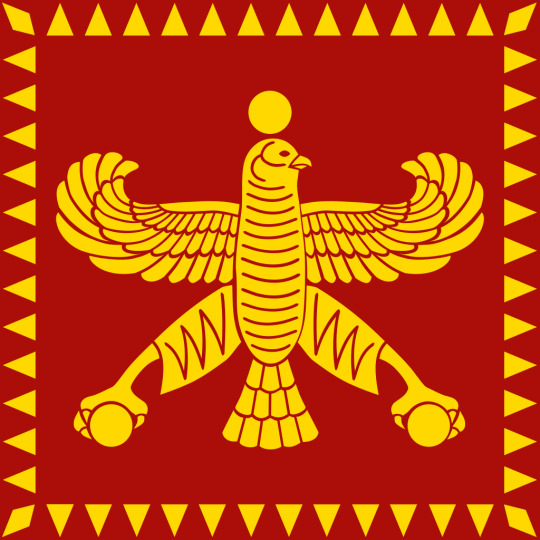
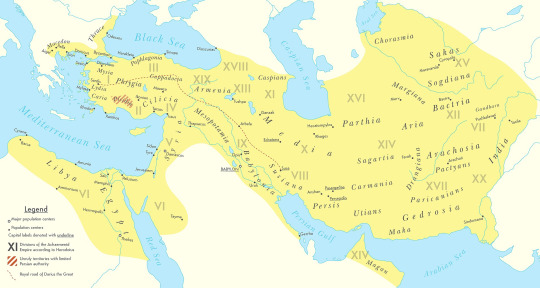


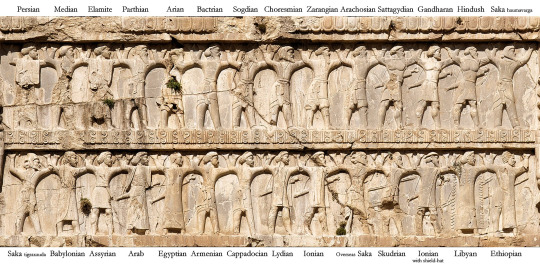
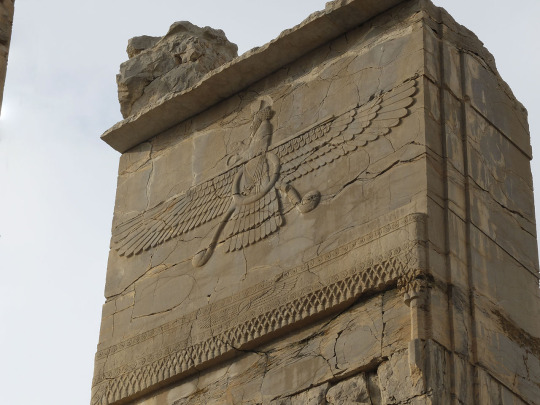




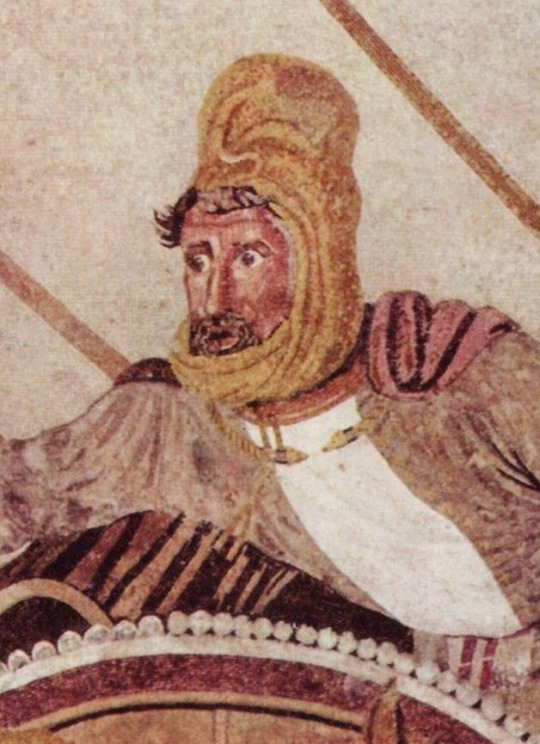
#military history#antiquity#iran#greece#ancient greece#classical greece#ancient ruins#ancient iran#ancient persia#achaemenid#persia#zoroastrianism#alexander the great#cyrus the great#xerxes#artwork#government#history#persian empire#ancient egypt
89 notes
·
View notes
Text
Love, the force that moved even the mightiest of rulers. From the passionate flames of Antony and Cleopatra to the profound love and partnership of Cyrus the Great and Cassandane, these ancient love stories reveal the universal language of the heart.
#love#Cleopatra#Taj Mahal#Nero#Cyrus the great#Achaemenid Empire#Queen Victoria#Napoleon#Nefertiti#Mughal Empire#marriage#rulers#ancient#history#ancient origins
46 notes
·
View notes
Text

Tonight is the Persian New Year, marked by the spring equinox at exactly 11:06 PM EDT. This festive event is celebrated in Iran and other Farsi-speaking countries. The special table for this event, which you see in the photo, is prepared by me.
Happy Nowruz to all!
گشت گرداگرد مهر تابناك ، ایران زمین
روز نو آمد و شد شادی برون زندر كمین ای تو یزدان ، ای تو گرداننده ی مهر و سپر
برترینش كن برایم این زمان و این زمین . . .
#نوروز باستانی ۲۵۸۳ بر همهی ایراندوستان خجسته باد
16 notes
·
View notes
Note
I never knew Redguards didn’t like magic! Makes even more sense for Tanya to have a bit of lightning at her fingertips LMFAO
-💎
There's a lot of interesting lore for the Redguards! Especially if you've played Elder Scrolls Adventures: Redguard.
Cyrus The Restless doesn't get talked about much, which is a shame because his game is a TRIP! And we get to explore Hammerfell. Cyrus fought a dragon before the Dragonborn in the 4th era!
14 notes
·
View notes
Text
@erisluna35 @generalluxun @theerurishipper @zoe-oneesama
#miraculous ladybug#mlb#mlb season five#mlb salt#mlb season 5 spoilers#mlb writers salt#astruc salt#miraculous ladybug salt#ml salt#cyrus the great#pee girl#pee girl salt#thomas astruc
18 notes
·
View notes
Text
Be honest!
Who's on your wallpaper?
(You may reblog if you want to answer as well)
Mine:


(Cyrus the great known as the king of the kings and queen Cassandane of Persia- achaemenid empire- 500 bc)
[[Glory to ahura mazda 💫🔥]]
#cyrus the great#achaemenid#persian#artwork#art#digital art#portrait#love#beauty#zoroaster#Zarathustra#kingdom of heaven
8 notes
·
View notes
Text
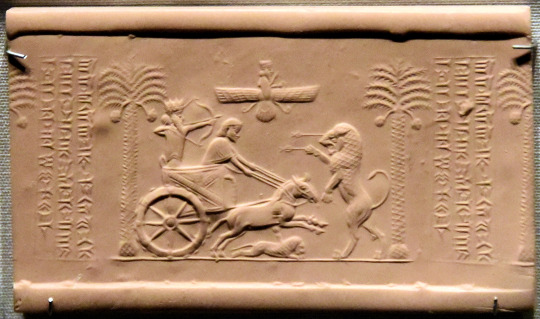

Seal of Darius the Great 6th-5th C. BCE. Impression of a cylinder seal of King Darius the Great hunting in a chariot, reading "I am Darius, the Great King" in Old Persian (𐎠𐎭𐎶𐏐𐎭𐎠𐎼𐎹𐎺𐎢𐏁𐎴 𐏋, "adam Dārayavaʰuš xšāyaθiya"), Elamite and Babylonian. The word 'great' only appears in Babylonian. British Museum, excavated in Thebes, Egypt.
"The first night after the passage, as he slept in the enemy's country, a vision appeared to him. He seemed to see in his sleep the eldest of the sons of Hystaspes, with wings upon his shoulders, shadowing with the one wing Asia, and Europe with the other. Now Hystaspes, the son of Arsames, was of the race of the Achaimenidai, and his eldest son, Darius, was at that time scarce twenty years old; wherefore, not being of age to go to the wars, he had remained behind in Persia. When Cyrus woke from his sleep, and turned the vision over in his mind, it seemed to him no light matter. He therefore sent for Hystaspes, and taking him aside said, "Hystaspes, your son is discovered to be plotting against me and my crown. I will tell you how I know it so certainly. The Gods watch over my safety, and warn me beforehand of every danger. Now last night, as I lay in my bed, I saw in a vision the eldest of your sons with wings upon his shoulders, shadowing with the one wing Asia, and Europe with the other. From this it is certain, beyond all possible doubt, that he is engaged in some plot against me. Return you then at once to Persia, and be sure, when I come back from conquering the Massagetai, to have your son ready to produce before me, that I may examine him."
Thus Cyrus spoke, in the belief that he was plotted against by Darius; but he missed the true meaning of the dream, which was sent by God to forewarn him, that he was to die then and there, and that his kingdom was to fall at last to Darius."
-Herodotus, The Histories, Book 1.209-210
#darius the great#cyrus the great#persian history#scythian#history#ancient history#antiquity#antiquities#museums#6th century bce#the british museum#herodotus#egypt#pagan
86 notes
·
View notes
Text
Everyone’s so hung up on the Roman Empire. BITCH WHAT ABOUT THE PERSIAN EMPIRE!!
The Persian empire is so cool and has so many damn stories that I could talk about for hours! Like how Cyrus the great was prophesied to take over his grandfather, King Astyages of Media, through his dreams being interrupted by the 3 WISE MEN! LIKE THE GUYS THAT GAVE JESUS HIS BIRTHDAY PRESENTS!! Also in the Old Testament, Cyrus was called the messiah before Jesus.
I know this isn’t the stuff I usually post but this is one of my special interests and I needed to get more people to learn about it.
5 notes
·
View notes
Text

The fall of Babylon by John Martin
#the fall of babylon#john martin#fall#babylon#art#painting#bible#religious#architecture#religion#history#storm#biblical#cyrus the great#chaldean#army#city#ancient world#religious art
199 notes
·
View notes
Text

An episode from Book I of The Histories: Astyages, king of the Medes, sends his general Harpagus to kill the baby Cyrus. Painting by Jean Charles Nicaise Perrin via Wikipedia (public domain)
12 notes
·
View notes
Text
I have to ask - what the f*ck is wrong with Cyrus the "great"? I just accidentally ran into one of his videos and the way he's talking about Marinette... I would share a link so you can hear how sick it is but I don't want him to get more views. He calls her a crazy b*tch and that's even not the worst insult he used... Does he think this will make me hate her? Now I feel even more sorry for her. What the heck?!
#miraculous ladybug#cyrus the great#ml youtube salt#marinette dupain cheng#ladybug#Poor thing#leave her alone#leave marinette alone challenge#marinette deserves better#Marinette deserves a better fandom
92 notes
·
View notes
Text
Here we explore the enigmatic tale of Nabonidus, the last ruler of the Neo-Babylonian Empire, whose reign from 556-539 BC ended in mystery and controversy.
Discover the story of Nabonidus, who ascended the throne under shadowy circumstances following the assassination of the boy-king Labashi-Marduk. His reign was marked by his prolonged absence at the Arabian oasis of Tayma, leaving a trail of questions about his motivations and actions.
Why did Nabonidus retreat to Tayma? Was it a spiritual quest, an archaeological interest, or a health retreat due to an alleged illness? This article explores the theories that range from devotion to religious archaeology, to recovery from an ulcer as described in the Dead Sea Scrolls.
#Marduk#Nabonidus#Neo-Babylon Empire#Saudi Arabia#Babylon#Persia#Cyrus the Great#Babylonians#ancient#history#ancient origins
20 notes
·
View notes
Text

Where’s the lie, T zone on his face so ashy from his contours of his face lol
Sigh, we’ll this is living proof, I fear season 6 is gonna be mid levels, since hell never learn as a former miraculous fan I’m disappointed.
Giving Thomas the tank engine , also support the fan merch & fanfic since 5he companies banning artists work for the series on multiple websites.
By the way Haven’t post a while due to full time job, but making new toh fanfics proceeding to the movie
Felt a lot of canon animated work is mid level nowadays.


#rewritemiraculousladybug#thomasastruc#thomas astruc#tales of ladybug and cat noir#carapace#marinette dupain cheng#Mary sue#chat noir#adrien agreste#miraculous adrien#miraculous ladybug#Rena#alya cesaire#max kante#shipping#zagtoons#juleka couffaine#mlb#mlb critical#mlb critic#the owl house#mlb fanart#miraculous#zodiac club#tikki#plagg#harriyanna hook#cyrus the great
4 notes
·
View notes
Text
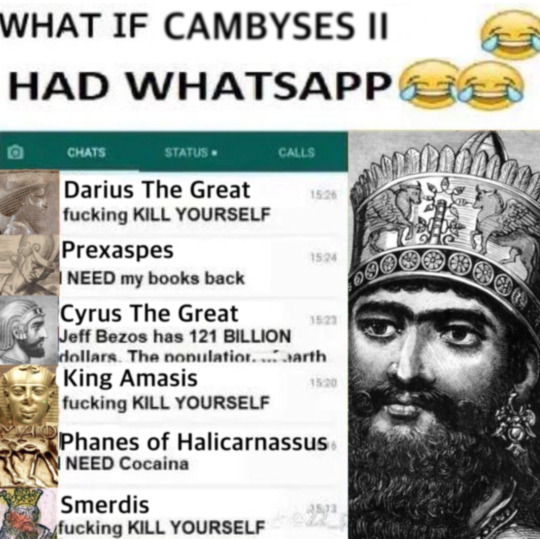
this was so much funnier in my head
#my ancient history teacher is going to hate me#cyrus the great#cambyses ii#darius the great#phanes of halicarnassus#smerdis#bardiya#prexaspes#king amasis#ancient persia#IT FEELS SO FUCKING WEIRD TAGGING THIS LIKE ANCIENT PERSIA IS A FANDOM HELP 😭😭#sourtalks
40 notes
·
View notes
Text

Miku the Great, King of Kings
I'm not able to draw, but I had to give it a shot.
#hatsune miku#cyrus the great#her ass looks weird the skirt and legs was by far the hardest part#my art#if it can even be counted as that
3 notes
·
View notes